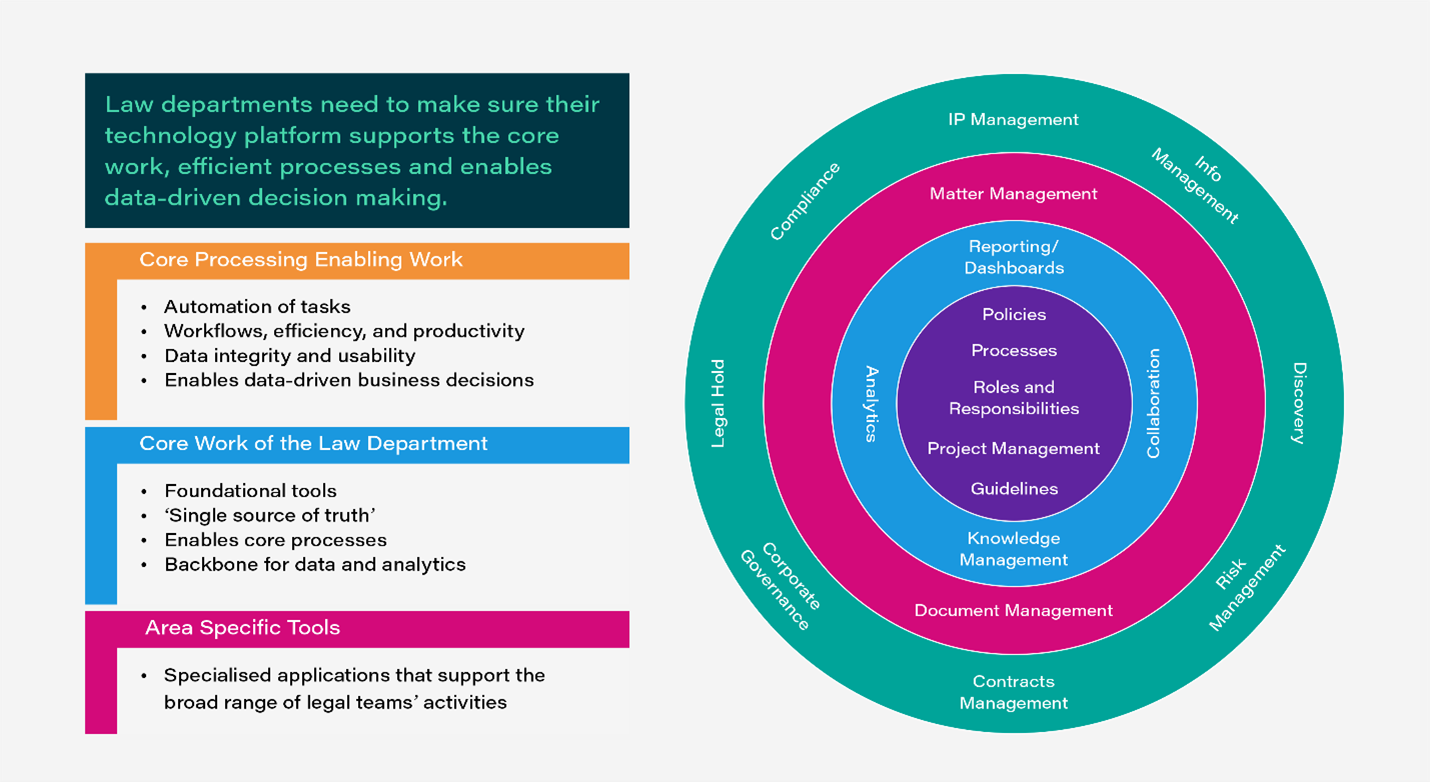Six Steps for General Counsels to Add Business Value – Part III
May 14, 2024
general counsel Consulting legal operations law department
In this post, we conclude our three-part series by examining the final two actions for general counsels to optimise their law department’s business and strategic value-add. Part I covered determining what internal clients of your department want and finding opportunities to boost operational efficiency. Part II examined tracking external spend and how to benchmark effectively. Here, we look at harnessing technology and using metrics.
Action Five: Harness the Power of Technology
When it comes to legal technology, general counsel should remember two ideas. First, technology is a means to an end (i.e., achieving efficiencies that add value) rather than beneficial in and of itself. Second, the value of technology depends on implementation – not merely the technical details but also the cultural and behavioral shifts required.
That means that a law department’s ‘technology journey’ – the evolution of its use of technology for maximum value – begins with optimising processes to best serve the law department’s efforts to aid business stakeholders. Whenever law department leaders fail to do that, the inevitable result is having to contort processes to fit into the constraints of the department’s technologies.
As shown below, a sound approach to harnessing technology addresses three domains: Core Processes, Core Work, and Tools. Moreover, a law department should work ‘outwards’ towards use cases and technology selection by starting with designing processes, establishing policies, defining roles and responsibilities, creating operational guidelines, and figuring out an approach to project management. Clarifying these items translates into a robust framework for developing a technology roadmap.

A critical early step is to assess your law department’s current state by answering questions like:
- What are the tech systems your law department uses? Do those outside the law department use these same systems? What other systems are already in use within your company?
- What kind of data gathering and reporting do you currently do? Is it sufficient? Is the data gathering and reporting process optimised?
- Do your tech systems have high user adoption rates? If not, why not?
- Are your tech systems scalable to accommodate future growth?
The answers illuminate opportunities to increase system adoption rates, fill gaps in your legal tech stack, improve processes, use legal tech to tackle additional business challenges, and more.
Next comes creating a legal tech roadmap that details:
- your current state (including existing systems, processes, and gaps or business challenges)
- short- and long-term plans for your legal tech (e.g., systems to continue to use, phase out, enhance/expand, replace, implement, or integrate)
- resourcing plans and budget
- metrics and processes for measuring success, ROI, and efficiency gains
Action Six: Select and Use the Right Measures
Just as ‘what gets measured gets done,’ so too ‘what you report is what others measure you on.’ This makes it critical for law departments to pick the right measures to track and report. Not everything measurable matters – and (as Elevate COO and GC Steve Harmon explained in a recent piece in the Association of Corporate Counsel publication ACC Docket) – not everything that matters is easily measurable. The right measures include ones pertaining to ‘effort’ (how much the department is doing particular activities) and ‘results’ (the outcomes achieved by the law department).
Every law department should develop a clear, repeatable metrics strategy that:
- conforms with best practices, tailored to the company’s specific needs
- reflects how legal supports cascading business priorities
- supports and enables sound management decisions
- demonstrates legal’s value to the organisation and enhances the law department’s brand
- is simple and easy to maintain
- does not require major investment in new technology to execute
Your approach should:
- align metrics strategy with your vision, strategy, and goals for the department
- leverage best practice metrics for legal teams
- identify constituencies and consumers of potential metrics
- inventory and analyse the data and information you already possess, including
- existing reporting capabilities
- data sources and places where info currently resides
- decide on which metrics to report and then categorise them based on intended purpose and audience
- design and test prototypes of reporting dashboards
- develop and document a go-forward framework for setting up and maintaining the metrics program
Six Actions, One Goal
Throughout our three-part series, we have emphasised that successful initiatives for law department optimisation do more than increase efficiency and help law departments do more with less. Above all, they deliver greater business value. The actions detailed in this series help uncover opportunities for both ‘quick wins’ and long-term strategic victories. We and our Elevate colleagues invite you to reach out with questions or to discuss these topics in further detail.
Learn more about our law department consulting services






